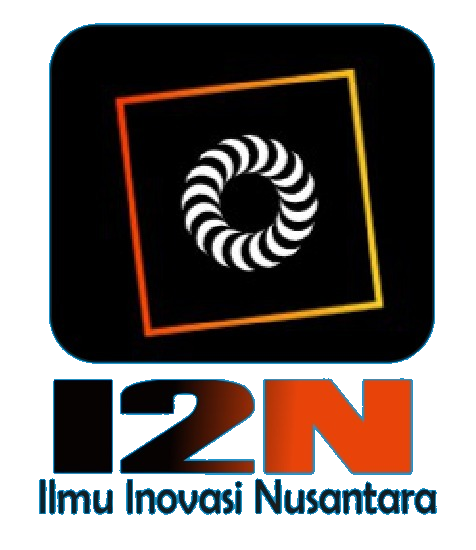Research on The Negative Role of Internet Memes in Youth Communication and The Correct Guidance Strategy
DOI:
https://doi.org/10.58557/(ijeh).v5i3.337Keywords:
Correct guidance, Internet culture, Memes, Negative effects, Youth interactionsAbstract
In the era of rapid Internet development, Internet memes have become highly popular among young people due to their unique expression and widespread dissemination. Memes reflect their emotions and state of mind and serve as a means for observing social phenomena and cultural trends. The popularity of Internet memes provides young people with new forms of communication and expression in complex social environments while fostering creative thinking and observation. However, due to their varied meanings and potential misuse, Internet memes can influence and shape young people's values and worldviews, sometimes leading to adverse effects. This study aims to analyze the impact of Internet memes on developing young people's values and explore appropriate ways to integrate memes into ideological and political education. A qualitative research approach is employed, utilizing literature analysis and case studies to understand how young people use and perceive memes. The findings indicate that while memes can serve as creative tools for social reflection, their uncontrolled use can lead to misinformation, oversimplification of complex issues, and the formation of uncritical thinking patterns. Therefore, a deeper understanding of appropriate meme usage and the role of educators in guiding young people is essential. Digital literacy-based educational approaches should be implemented to help young people understand memes' meaning, context, and social impact. Additionally, thoughtful supervision and regulations that do not stifle creativity should be applied to ensure the healthy and positive development of Internet memes
References
Alonso, J. M., & Sandoval, L. E. (2024). This is not a meme: Internet memes as iterable significant object inside virtual semiotic communities. Designis, 41, 127–142. https://doi.org/10.35659/designis.i41p127-142
Artamonov, D. S. (2021). Humor in historical memory: From an anecdote and caricature to an Internet meme. Galactica Media: Journal of Media Studies, 3(3), 213–237. https://doi.org/10.46539/gmd.v3i3.181
Ayele, S. T., Cecchetti, L., & Reber, R. (2025). Ingredients for a good meme: Cognitive, emotional, and social factors of Internet meme appreciation. Psychology of Aesthetics, Creativity, and the Arts. https://doi.org/10.1037/aca0000744
Boyd, D. (2014). It's Complicated: The Social Lives of Networked Teens. Yale University Press.
Braun, V., & Clarke, V. (2006). Using thematic analysis in psychology. Qualitative Research in Psychology, 3(2), 77–101.
Buckingham, D. (2019). The Media Education Manifesto. Polity Press.
Creswell, J. W., & Poth, C. N. (2018). Qualitative Inquiry and Research Design: Choosing Among Five Approaches. SAGE Publications.
Denisova, A. (2019). Internet Memes and Society: Social, Cultural, and Political Contexts. Routledge.
Gal, N., Shifman, L., & Kampf, Z. (2016). “It Gets Better: Internet Memes and the Construction of Collective Identity.” New Media & Society, 18(8), 1698–1714.
Galip, I. (2024). Methodological and epistemological challenges in meme research and meme studies. Internet Histories, 8(4), 312–330. https://doi.org/10.1080/24701475.2024.2359846
Highfield, T. (2016). Social Media and Everyday Politics. Polity Press.
Issers, O. S. (2021). Potential of transformations in polycode Internet meme within the event-related context of 2020. Vestnik Volgogradskogo Gosudarstvennogo Universiteta–Seriya 2: Yazykoznanie, 20(2), 26–41. https://doi.org/10.15688/jvolsu2.2021.2.3
Jenkins, H., Ford, S., & Green, J. (2016). Spreadable Media: Creating Value and Meaning in a Networked Culture. NYU Press.
Johann, M., & Bülow, L. (2019). One does not simply create a meme: Conditions for the diffusion of Internet memes. International Journal of Communication, 13, 1720–1742.
Koza, M. (2015). Do you know this meme? Pragmatics and politics of Internet interpretative communities. Teksty Drugie, 3, 236–245.
Maddox, J. (2018). Of Internet born: Idolatry, the Slender Man meme, and the feminization of digital spaces. Feminist Media Studies, 18(2), 235–248. https://doi.org/10.1080/14680777.2017.1300179
Marwick, A., & Lewis, R. (2017). Media Manipulation and Disinformation Online. Data & Society Research Institute.
Mielczarek, N. (2024). From Dark MAGA and racetracks to a presidential reelection campaign: The rhetorical becomings of the Dark Brandon meme as visual enthymeme. Argumentation and Advocacy, 60(2), 100–118. https://doi.org/10.1080/10511431.2024.2432124
Milner, R. M. (2016). The World Made Meme: Public Conversations and Participatory Media. MIT Press.
Phillips, W., & Milner, R. M. (2017). The Ambivalent Internet: Mischief, Oddity, and Antagonism Online. Polity Press.
Poskiene, A. (2014). An Internet meme as an element of intercultural communication. In Proceedings of the 8th International Technology, Education and Development Conference (INTED2014).
Rogers, R., & Giorgi, G. (2024). What is a meme, technically speaking? Information, Communication & Society, 27(1), 73–91. https://doi.org/10.1080/1369118X.2023.2174790
Ross, A. S., & Rivers, D. J. (2019). “Internet Memes as Polyvocal Political Participation.” New Media & Society, 21(8), 1896–1915.
Shifman, L. (2013). Memes in Digital Culture. MIT Press.
Silverman, C. (2015). Lies, Damn Lies, and Viral Content: How News Websites Spread (and Debunk) Misinformation in Social Media. Tow Center for Digital Journalism.
Zannettou, S., Caulfield, T., De Cristofaro, E., Sirivianos, M., Stringhini, G., & Blackburn, J. (2018). “On the Origins of Memes by Means of Fringe Web Communities.” Proceedings of the ACM on Human-Computer Interaction, 2(CSCW), 1–23.
Downloads
Published
How to Cite
Issue
Section
License
Copyright (c) 2025 Zhang Qing

This work is licensed under a Creative Commons Attribution-ShareAlike 4.0 International License.














